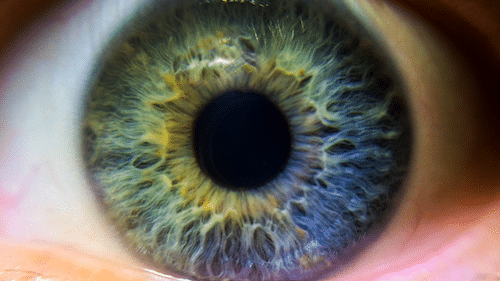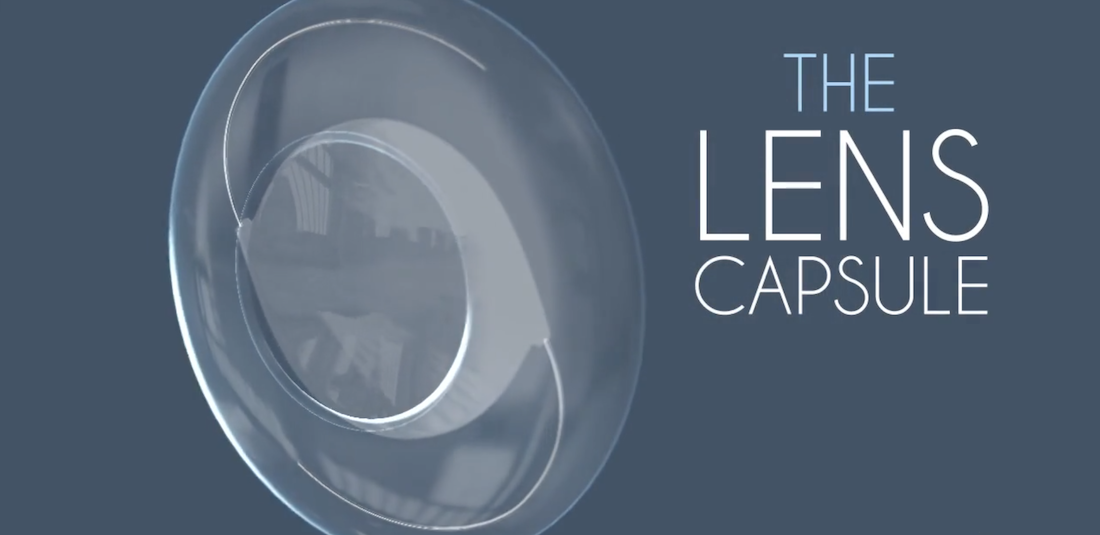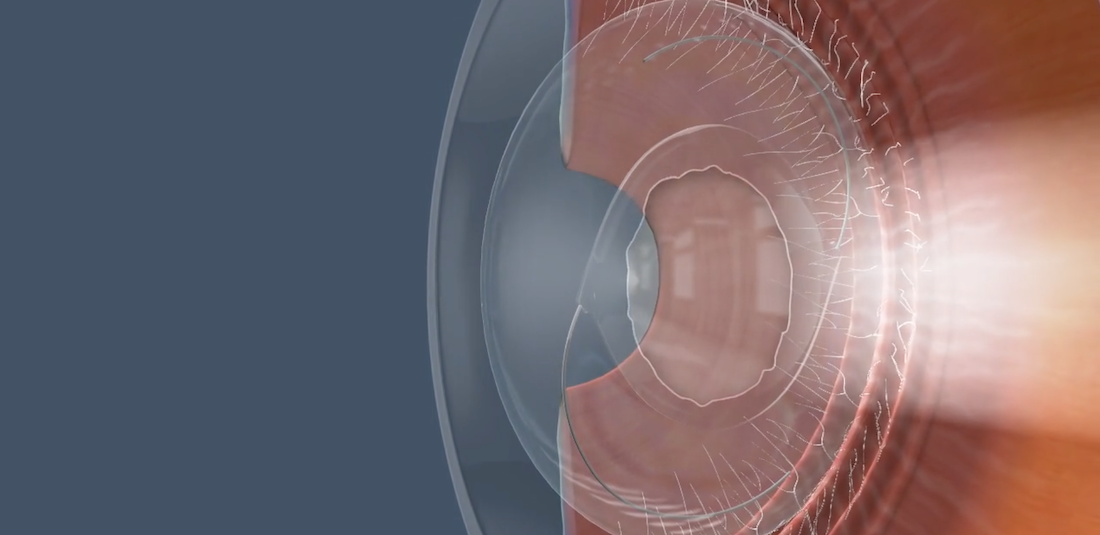
Laser capsulotomy
A quick and painless procedure to treat cloudy vision after cataract surgery
Learn moreImprove your eyesight after cataract surgery
A simple and safe laser treatment to improve your eyesight

Why does eyesight become blurred after cataract surgery?
Sometimes, months or even years after cataract surgery, your vision may seem to fade. This is often because of something called capsule clouding or opacification.

Understanding cataract surgery
When you had cataract surgery, your natural lens which had become cloudy was removed. A new clear artificial intraocular lens (IOL) was put inside the lens membrane, called the capsule.

Capsule clouding
After surgery, the capsule may thicken and become cloudy. This is called capsule clouding or posterior capsule opacification (PCO). It can cause your eyesight to become blurred, misty, and you may experience glare at night.
This condition is sometimes called a "secondary cataract". However it is not the cataract coming back, but instead a very common condition following cataract surgery.
How to treat capsule clouding after cataract surgery
A simple and safe laser treatment

Posterior capsulotomy
Posterior capsulotomy is an effective, safe, and simple laser procedure to improve your eyesight after cataract surgery. It is performed in the office, and typically takes no more than a few minutes.
How does laser posterior capsulotomy work?
Dr Kerr will use a special laser to create an opening in the centre of the lens capsule, which lets light through.

-
Creates an opening in the capsule
A small opening will be created in the centre of the capsule, about the size of your pupil.
-
Removes cloudiness
Light is able to enter the eye and vision is improved
-
A one-time procedure
Once the capsule has been removed, it cannot come back, and it is extremely unlikely the procedure will need to be repeated in the future.
Do you need posterior capsulotomy?
A common procedure performed after cataract surgery
Is posterior capsulotomy me?
If you have blurred vision after cataract surgery from capsule clouding, you may benefit from posterior capsulotomy.
Posterior capsulotomy is a common laser procedure, performed months or sometimes years after cataract surgery.

Dr Nathan Kerr
Melbourne Cataract SurgeonCapsulotomy
Benefits melbourne- Only takes a few minutes
- Office procedure
- Improves eyesight
- Usually does not need to be repeated
Who should have laser posterior capsulotomy?
It is necessary to first undergo an eye examination to determine if you require posterior capsulotomy. If you fit into one or more of the following categories, you may benefit from posterior capsulotomy:
Cataract surgery
You have had cataract surgery or refractive lens replacement surgery.
Blurred vision
You are are experiencing blurred, cloudy vision or glare.
Eye examination
Your optometrist or ophthalmologist has detected capsule clouding.
Clear vision
You desire clear vision.
Experienced Cataract & Laser Surgeon
Dr Nathan Kerr has performed thousands of cataract and laser eye procedures and regularly audits his results to ensure he is delivering the best results.
book an appointment
Frequently asked questions
Learn more about posterior capsulotomy
What is posterior capsulotomy?
Posterior capsulotomy is a quick and painless procedure to treat blurred vision after cataract surgery caused by capsule clouding.
It is also known as YAG capsulotomy, which describes the type of laser used.
What are the benefits of posterior capsulotomy?
The purpose of the procedure is to improve your eyesight after cataract surgery. The laser treatment should hopefully improve your vision to how it was before the membrane capsule became cloudy.
What happens during the posterior capsulotomy procedure?
Prior to treatment, eye drops are administered to enlarge your pupil and numb your eye. Then, brief pulses of light are delivered to the back of the capsule using a specially designed microscope. You will see bright flashes of light, but the procedure itself is painless. The entire process takes just a few minutes.
What happens after the posterior capsulotomy procedure?
You may experience some redness, eye discomfort, sensitivity to light and blurry vision after the procedure for up to three days. Most people are able to return to normal activities the following day. Eye drops are usually not required.
What are the risks?
The procedure overall is very safe. There is a small risk of raised eye pressure immediately after the procedure. To lower this risk, you will be given eye pressure lowering drops before the procedure.
Serious problems after posterior capsulotomy are very rare. These include inflammation inside the eye, swelling of the macula, or swelling of the front window of the eye. Extremely rarely the fine light sensitive membrane at the back of the eye comes away from the wall of the eye, this is called a retinal detachment. These problems either resolve on their own or can be treated.
Do I need to have the procedure repeated?
The procedure does not normally need to be repeated. Occasionally the opening made by the laser beam is incomplete, or not big enough. This will be detected on your follow-up visit. If this is the case, it may be necessary to repeat the treatment.

